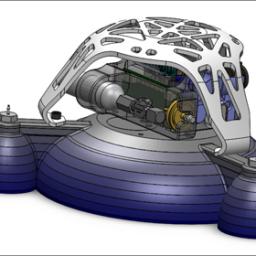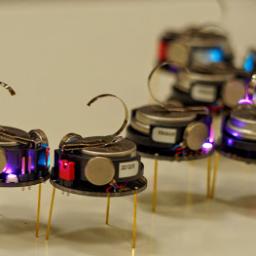Scientists have turned individual cells into miniature lasers by injecting them with droplets of oil or fat mixed with a fluorescent dye that can be activated by short pulses of light. This finding could help to broaden how light is used for both medical diagnosis and treatment. The system was devised by Harvard Medical School scientiest, and it uses droplets of fat or oil within a cell to reflect and amplify light, generating a laser. Conventional luminescent probes, which include fluorescent dyes and proteins, have relatively broad emission spectra. This limits the number of probes that can be used simultaneously, because it is often difficult to distinguish these sources of luminescence from the broad background emissions of naturally occurring molecules in tissue.
http://www.deccanherald.com/content/494474/oil-droplets-turn-cells-tiny.htmlBy now, most people feel comfortable conducting online financial transactions on the Web. The cryptographic schemes that protect online banking and credit card purchases have proven their reliability over decades. But right now, there is no effective way to prevent misuse of your data by the people authorized to access it, say for example a bank employee can still access your data, and frequently we are reading news about misuse of the data by the bank employees. i-e Once you share your data with the bank, Healthcare system or any other private company, for your online transactions, you don't have any control over who exactly is using or misusing your data.
http://news.mit.edu/2014/whos-using-your-data-httpa-0613
Traditional industrial robots are rigid as well as fast, precise, and powerful. Their speed and accuracy come at the cost of complexity and can often pose a danger to humans who get too close. Soft robots are adaptable and resilient but slow, difficult to fabricate, and challenging to make autonomous because most motors, pumps, batteries, sensors, and microcontrollers are rigid. But what if you could combine the autonomy and speed of a rigid robot with the adaptability and resiliency of a soft robot, and do so relatively cheaply and quickly?
http://wyss.harvard.edu/viewpressrelease/207/a-jump-for-softbodied-robots
Researchers at Harvard university had demonstrated a self-organizing swarm which was formed by one thousand little robots known as "Kilobots". The robots begin to blink at one another and then gradually arrange themselves into a five-pointed star, once after a computer scientist gave a command for forming a sea Star shape to 1,024 little bots simultaneously via an infrared light. Just as single cells can assemble into complex multicellular organisms, the individual Kilobots can follow simple rules to autonomously assemble into predetermined shapes.
http://www.eecs.harvard.edu/ssr/projects/progSA/kilobot.html
